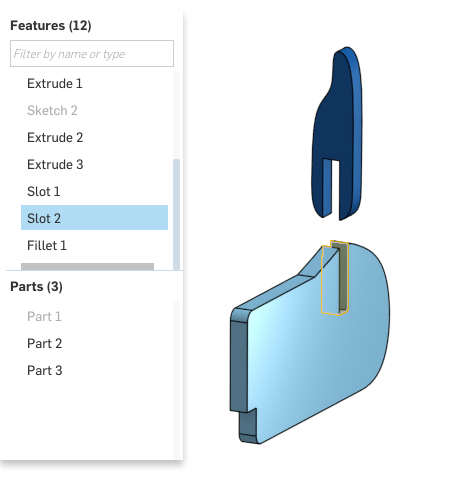Slot Region Definition
- Antenna Theory Tutorial
They may also take the morphology appropriate for adjectives and adverbs. In addition, they may occupy precisely the syntactic slot normally occupied by a regular noun or verb.' Fox, Introduction. Fillers, Pauses and Placeholders, ed. By Nino Amiridze, Boyd H. Davis, and Margaret Maclagan, John Benjamins, 2010. Countable noun A slot is a narrow opening in a machine or container, for example, a hole that you put coins in to make a machine work. He dropped a coin into the slot and dialed. The Worldwide Airport Slot Guidelines (WASG), provide the industry with a single set of guidelines for airport slot management and allocation. The slot planning process is the essential back bone to allow the industry to plan operations to the world’s most congested airports, avoiding what would otherwise be chaos. Slot definition is - a narrow opening or groove: slit, notch. How to use slot in a sentence.

- Antenna Basic Terms
- Types of Antennas
Slot Region Definition Geography

- Antenna Arrays
- Wave Propagation
- Antenna Theory Useful Resources
- Selected Reading
Radiation intensity of an antenna is closely related to the direction of the beam focused and the efficiency of the beam towards that direction. In this chapter, let us have a look at the terms that deal with these topics.
Directivity
According to the standard definition, “The ratio of maximum radiation intensity of the subject antenna to the radiation intensity of an isotropic or reference antenna, radiating the same total power is called the directivity.”
An Antenna radiates power, but the direction in which it radiates matters much. The antenna, whose performance is being observed, is termed as subject antenna.
Its radiation intensity is focused in a particular direction, while it is transmitting or receiving. Hence, the antenna is said to have its directivity in that particular direction.
The ratio of radiation intensity in a given direction from an antenna to the radiation intensity averaged over all directions, is termed as directivity.
If that particular direction is not specified, then the direction in which maximum intensity is observed, can be taken as the directivity of that antenna.
The directivity of a non-isotropic antenna is equal to the ratio of the radiation intensity in a given direction to the radiation intensity of the isotropic source.
Mathematical Expression
The radiated power is a function of the angular position and the radial distance from the circuit. Hence, it is expressed by considering both the terms θ and Ø.
$$Directivity = frac{Maximum radiation intensity of subject antenna}{Radiation intensity of an isotropic antenna}$$$$D = frac{phi(theta,phi)_{max}(from subject antenna)}{phi_{0}(from an isotropic antenna) }$$Where
${phi(theta,phi)_{max}}$ is the maximum radiation intensity of subject antenna.
${phi_{0}}$ is the radiation intensity of an isotropic antenna (antenna with zero losses).
Aperture Efficiency
According to the standard definition, “Aperture efficiency of an antenna, is the ratio of the effective radiating area (or effective area) to the physical area of the aperture.”
An antenna has an aperture through which the power is radiated. This radiation should be effective with minimum losses. The physical area of the aperture should also be taken into consideration, as the effectiveness of the radiation depends upon the area of the aperture, physically on the antenna.
Mathematical Expression
The mathematical expression for aperture efficiency is as follows −
$$varepsilon_{A} = frac{A_{eff}}{A_{p}}$$where
$varepsilon_{A}$ is Aperture Efficiency.
${A_{eff}}$ is effective area.
${A_{p}}$ is physical area.
Antenna Efficiency
According to the standard definition, “Antenna Efficiency is the ratio of the radiated power of the antenna to the input power accepted by the antenna.”

Simply, an Antenna is meant to radiate power given at its input, with minimum losses. The efficiency of an antenna explains how much an antenna is able to deliver its output effectively with minimum losses in the transmission line.
This is otherwise called as Radiation Efficiency Factor of the antenna.
Mathematical Expression
The mathematical expression for antenna efficiency is given below −
$$eta_{e} = frac{P_{rad}}{P_{input}}$$Where
$eta_{e}$is the antenna efficiency.
${P_{rad}}$ is the power radiated.
${P_{input}}$ is the input power for the antenna.
Gain
According to the standard definition, “Gain of an antenna is the ratio of the radiation intensity in a given direction to the radiation intensity that would be obtained if the power accepted by the antenna were radiated isotropically.”
Simply, gain of an antenna takes the directivity of antenna into account along with its effective performance. If the power accepted by the antenna was radiated isotropically (that means in all directions), then the radiation intensity we get can be taken as a referential.
The term antenna gain describes how much power is transmitted in the direction of peak radiation to that of an isotropic source.
Gain is usually measured in dB.
Unlike directivity, antenna gain takes the losses that occur also into account and hence focuses on the efficiency.
Mathematical Expression

The equation of gain, G is as shown below.
$$G = eta_{e}D$$Where
G is gain of the antenna.
$eta_{e}$is the antenna’s efficiency.
D is the directivity of the antenna.
Units
Slot Region Definition Biology
The unit of gain is decibels or simply dB.